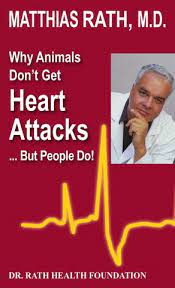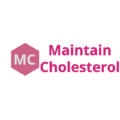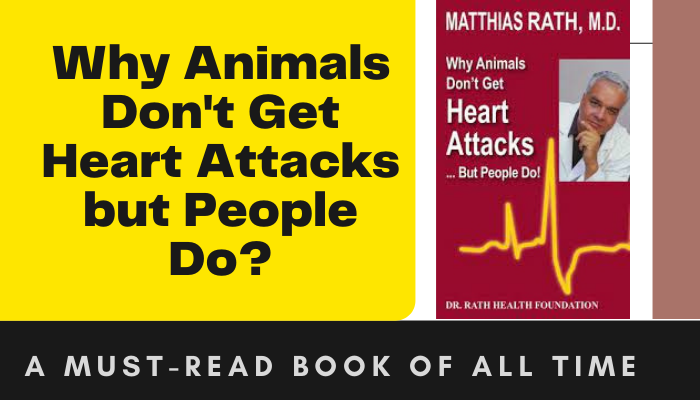Table of Contents
Introduction
Why animals don’t get heart attacks is a book written by dr matthias rath, which explains the reason behind humans suffer from heart disease. Heart disease is the leading cause of death for both men and women in the United States, India, and worldwide. That’s right, even though dogs and cats eat a diet that is high in saturated fat and cholesterol, they rarely suffer from heart disease. So what is the difference between humans and animals when it comes to heart health?
What Causes Heart Attacks?
The traditional view is that heart attacks are caused by high cholesterol, especially when LDL levels of cholesterol are high. This theory is based on the idea that cholesterol builds up in the arteries, eventually causing a blockage that can lead to a heart attack. However, there is growing evidence that this theory is not entirely accurate.
In fact, many people with high cholesterol never have a heart attack. And, conversely, some people with low cholesterol do have heart attacks. So what is the real cause of heart attacks?
Different theories of heart disease
Various theories have been proposed for the cause of heart disease. The multifaceted path by which cholesterol became linked to coronary heart disease is one of the great biomedical stories of the 20th century. Ref 1;
Lipid Hypothesis
The lipid hypothesis is the most widely accepted theory of heart disease. It states that heart disease is caused by a buildup of cholesterol and other fatty substances in the arteries. This buildup, called atherosclerosis, can narrow the arteries and restrict blood flow to the heart. If a blood clot forms in a narrowed artery, it can block the flow of blood completely, leading to a heart attack.
Inflammation
Inflammation is another important factor in heart disease. Inflammation can damage the lining of the arteries, making them more susceptible to atherosclerosis. In addition, inflammation can promote the formation of blood clots.
Reactive Oxygen Species (ROS)
Reactive oxygen species (ROS) are unstable molecules that can damage cells and tissues. ROS are produced by the body as a normal part of metabolism, but they can also be produced in excess by factors such as smoking, pollution, and stress. Excess ROS can damage the lining of the arteries, leading to inflammation and atherosclerosis.
Recent studies have reported that overproduction of oxidative stress-related factors like reactive oxygen species (ROS) can cause myocardial infarction, atherosclerosis, and diabetes [Ref 2, 3).
Other Theories
In addition to the lipid hypothesis, inflammation, and ROS, there are other theories of heart disease. These include:
The homocysteine theory, which states that high levels of homocysteine, an amino acid, can damage the lining of the arteries.
The insulin resistance theory, which states that insulin resistance, a condition in which the body does not respond normally to insulin, can lead to inflammation and heart disease.
The stress theory, which states that chronic stress can damage the lining of the arteries and increase the risk of heart disease.
It is likely that heart disease is caused by a combination of factors, including the lipid hypothesis, inflammation, ROS, and other factors.
Micro nutrients deficiency theory, which states that micro nutrients are very much essential for the functioning of the cells. Micro nutrients serve as cofactors or part of essential amino acids in enzymatic reactions because they facilitate the transition between oxidized and reduced states [Ref 4, 5 ] Functioning of the cells affects cellular health which in turn causes chronic disease.
Latest Theory
The Vitamin C Deficiency Theory
Dr. Matthias Rath, an internationally respected cardiovascular researcher, has proposed a new theory about the cause of heart attacks. He believes that heart attacks are caused by a deficiency of vitamin C.
Dr. Rath’s theory is based on the fact that animals produce large amounts of vitamin C, while humans do not. This means that animals have strong, healthy arteries that are resistant to damage. Humans, on the other hand, are more likely to develop clogged arteries due to a lack of vitamin C.
Thus using vitamin therapy one can reverse heart disease and maintain good heart health.
Why Animals Don’t Get Heart Attacks

So why don’t animals get heart attacks? The answer is simple: they produce their own vitamin C. Vitamin C is essential for the production of collagen, which is a protein that gives strength and flexibility to the arteries. When animals eat a diet that is rich in vitamin C, they are able to produce enough collagen to keep their arteries healthy.
The Importance of Vitamin C
Vitamin C is also important for the immune system. It helps to fight off infection and inflammation, both of which can damage the arteries. In addition, vitamin C helps to protect the heart from damage caused by free radicals. Free radicals are unstable molecules that can damage cells and tissues.
How to Get More Vitamin C
The best way to get more vitamin C is to eat a diet that is rich in fruits and vegetables. Citrus fruits, such as oranges, lemons, and grapefruits, are particularly good sources of vitamin C. Other good sources of vitamin C include broccoli, Brussels sprouts, strawberries, and kiwifruit.
Conclusion
The traditional view of heart disease is that it is caused by high cholesterol. However, Dr. Rath’s vitamin C deficiency theory offers a more comprehensive explanation for why heart attacks occur. He has written a very interesting book on “why animals don’t get get heart attacks”.
If you are concerned about your heart health, it is important to talk to your doctor. However, you can also take steps to improve your own heart health by eating a healthy diet, exercising regularly, and getting enough sleep. And, most importantly, make sure to get enough vitamin C!
References
- A Century of Cholesterol and Coronaries: From Plaques to Genes to Statins https://www.ncbi.nlm.nih.gov/pmc/articles/PMC4525717/
- Reactive oxygen species (ROS) homeostasis and redox regulation in cellular signaling: https://www.ncbi.nlm.nih.gov/pmc/articles/PMC3454471/
- The role of reactive oxygen species in the pathophysiology of cardiovascular diseases and the clinical significance of myocardial redox: https://www.ncbi.nlm.nih.gov/pmc/articles/PMC5566734/
- Micronutrient deficiencies in heart failure: Mitochondrial dysfunction as a common pathophysiological mechanism? https://onlinelibrary.wiley.com/doi/full/10.1111/joim.13456
- Nutrient Deficiencies in Heart Failure: A Micro Problem With Macro Effects? https://www.ahajournals.org/doi/10.1161/JAHA.118.010447

